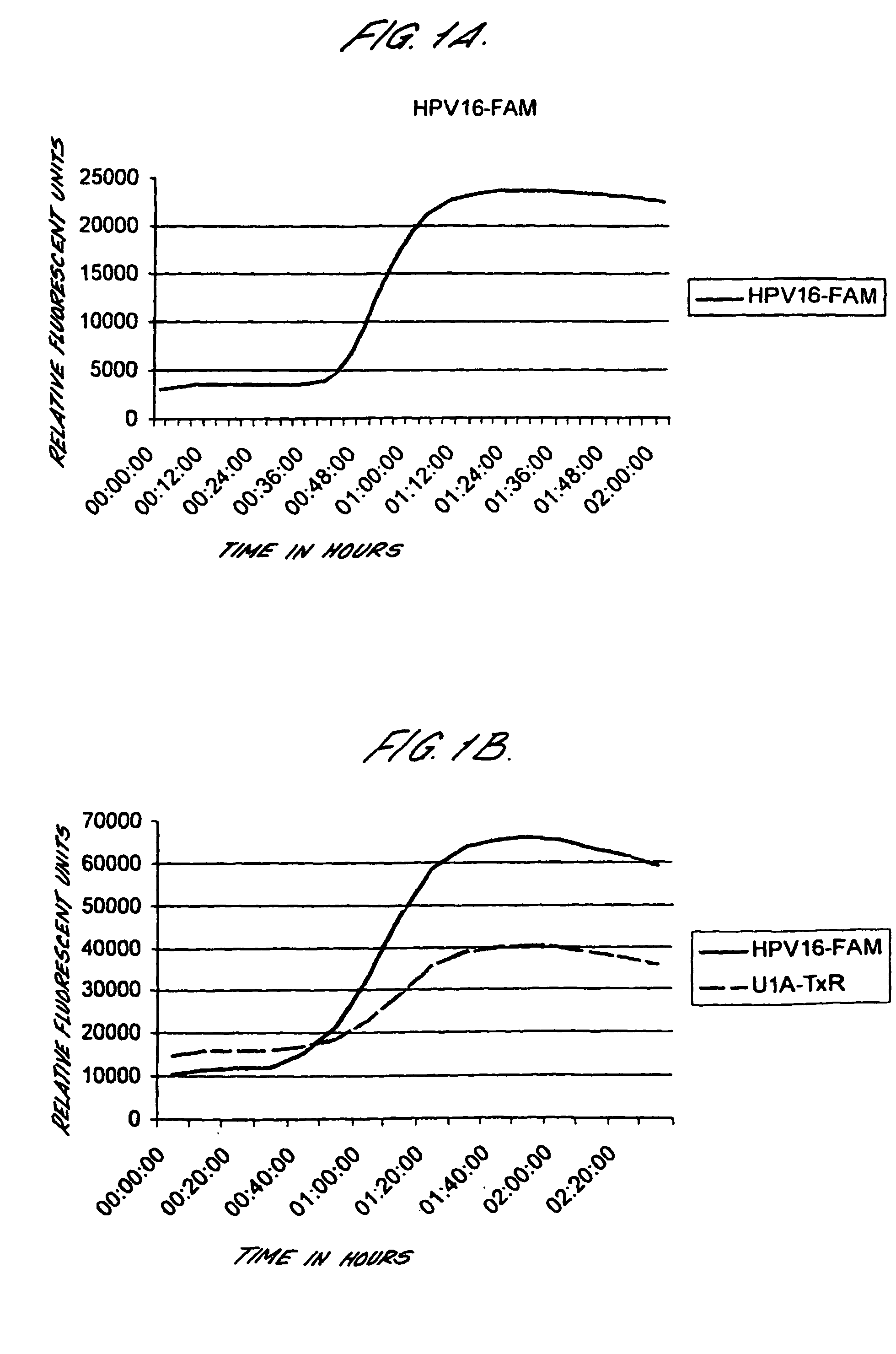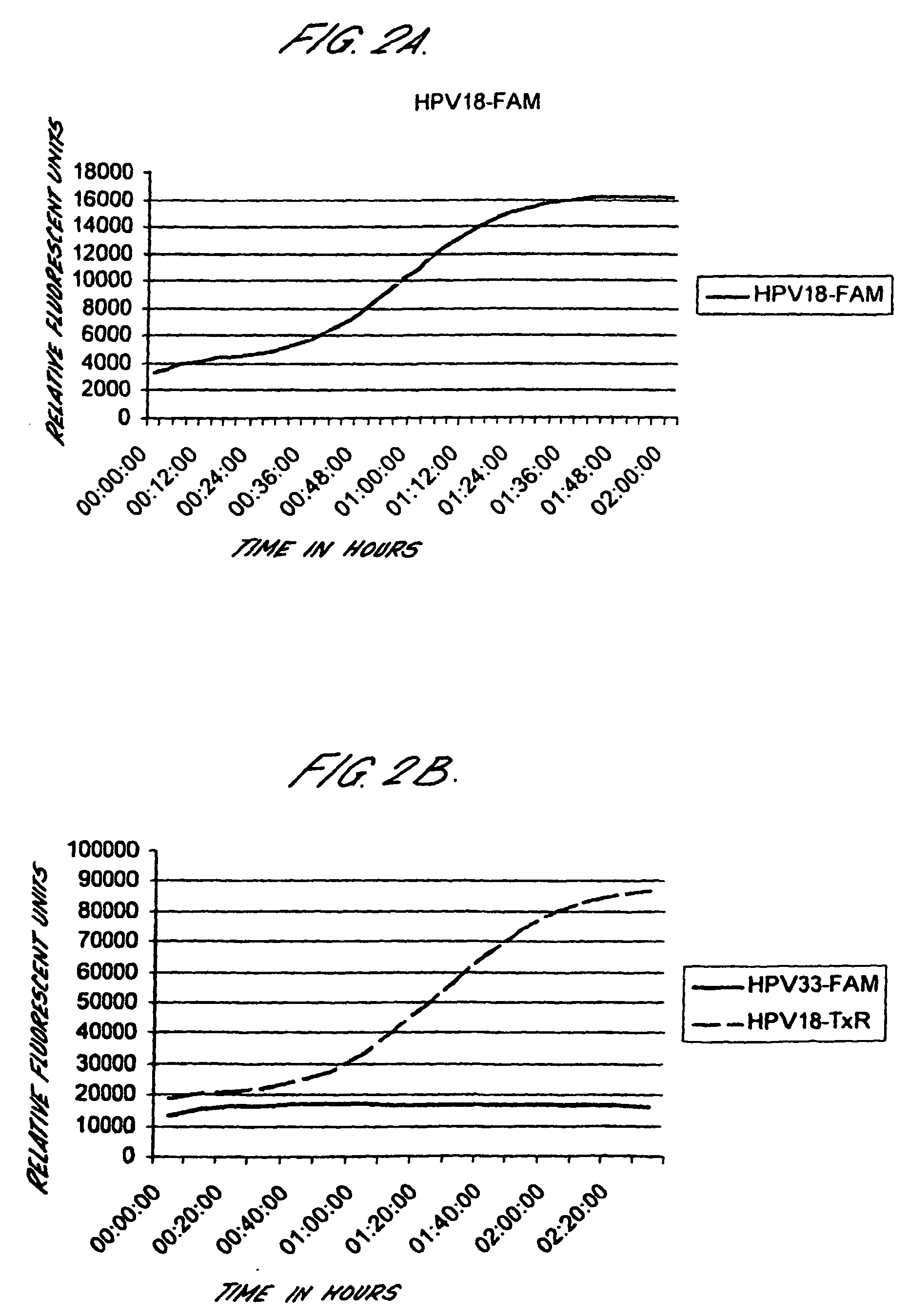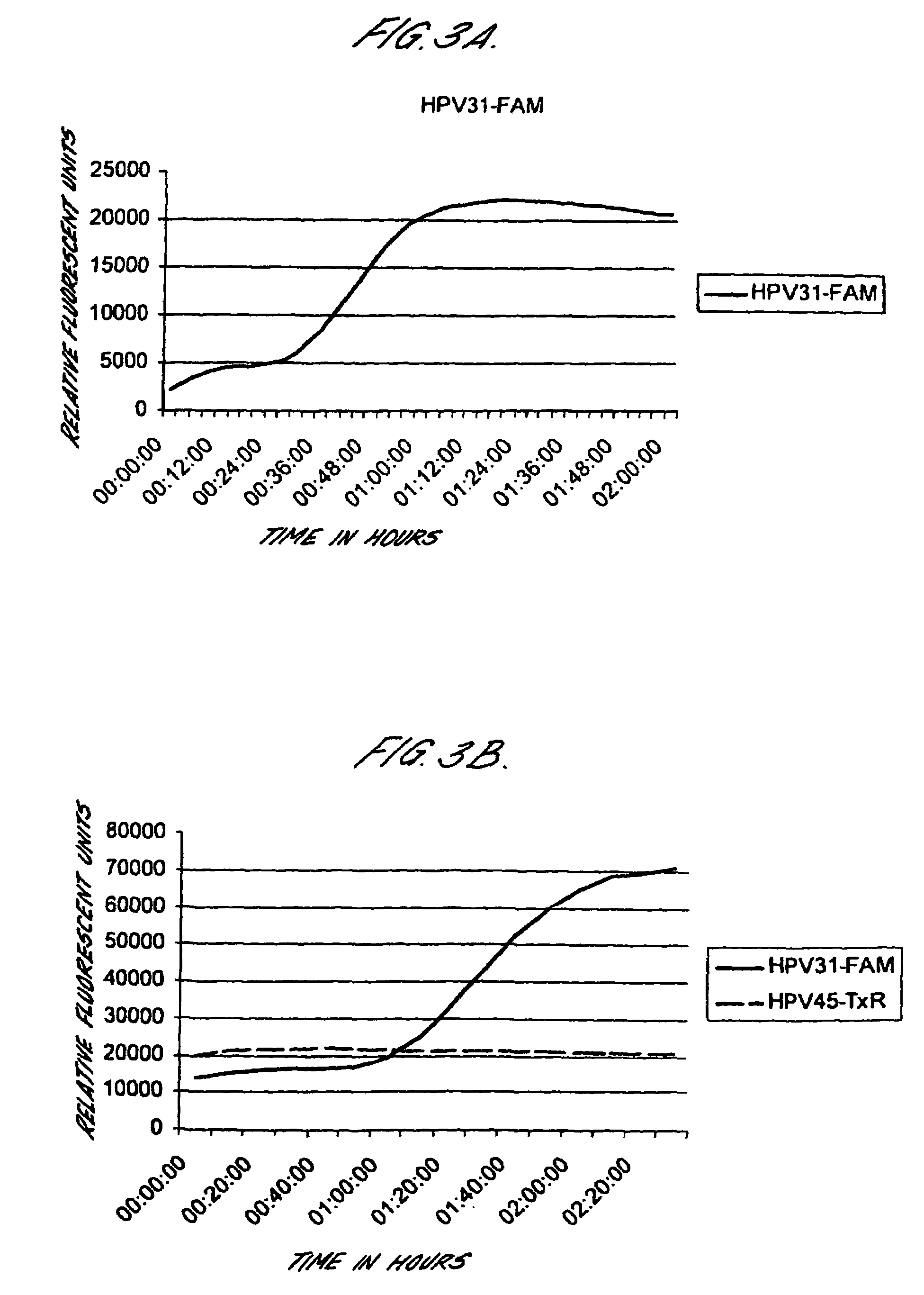Method for detecting human papillomavirus mRNA
a human papillomavirus and detection method technology, applied in the field of in vitro, can solve the problems of low risk of these women, cell may soon develop some changes, and the possibility of regression of cell changes by hpv integration
- Summary
- Abstract
- Description
- Claims
- Application Information
AI Technical Summary
Benefits of technology
Problems solved by technology
Method used
Image
Examples
example 2
Sensitivity of Real-time NASBA on Control Cell Lines
[0198]Cervical cancer cell lines, CaSki, SiHa and HeLa were diluted in lysis buffer either before automated extraction of nucleic acids using the Boom's extraction method from Organon Teknika / bioMerieux (parallels 1 and 3), or after nucleic acid extraction (parallel 2). Real-time NASBA was performed using molecular beacons probes labelled with Texas red (16, L1 and 18) or FAM (U1A, 33 and 31) following the protocol described above.
[0199]
TABLE 9PrimerCaSkiCaSkiHeLasets and161616333333183118311831probesE6U1E6U1E6U1L1E6L1E6L1E6E6E6E6E6E6E6Parallels112233112233112233Number ofCells100 000+++++++−+−+−+−+−+− 10 000+++++++−+−+−+−+−+− 1 000+++++++−+−+−+−+−+− 100+++++++−+−+−+−+−+− 10++++++−−−−+−+−+−+− 1−−+−+−−−−−−−+−+−+− 10−1−−−−−−−−−−−−−−−−−−
[0200]Thus, it is possible to detect HPV E6 mRNA in less than 1 cell using real-time NASBA.
[0201]Real-time NASBA was tested both as a multiplex assay and as single reactions. The results from t...
example 3
Further Clinical Study in 190 Patients
Patients / Clinical Samples
[0232]Biopsies from 190 women admitted to Østfold central-hospital for treatment of CIN in the period 1999-2001. The mean age of the 190 women included in the study was 37.4 years (range 22-74 years). Biopsies were frozen in −80° C. immediately after collection.
Cytological Examination of Samples
[0233]The routine cytological reports were used to record cytological findings. No attempt was made to re-evaluate the slides. Each one of them indicated a CIN II-III condition, i.e. a high grade dysplasia or HSIL, which was the basis for hospital admittance, colposcopy and biopsy.
Histological Examination of Samples
[0234]A biopsy, here termed biopsy 1, was taken after a high-grade cytology report. If it confirmed a high-grade lesion (CIN II or III), the patient was again admitted to hospital, this time for colposcopically guided conization. Before the conization, but after local anesthesia was applied, a second biopsy (biopsy 2) w...
example 4
HPV Detected by PreTect HPV-Proofer and PCR Compared to Cytology and Histology:
[0244]Normal and ASCUS samples (including borderline smears) were determined by cytology. All samples were tested with consensus PCR and PreTect HPV-Proofer but only the consensus positive samples were typed by PCR. The CIN 3 and cancer samples were determined by histology and all the samples were tested with all three methods. The results are shown in FIG. 6. Concordance between real-time multiplex NASBA and PCR compared to cytology or histology is shown in Table 15 below.
[0245]
TABLE 15Concordance between real-time multiplex NASBAand PCR compared to cytology or histologyCytology / HistologyConcordancea (Number)Concordanceb (Number)Normal98.2% (4043)42.8% (138)ASCUSc94.5% (55)78.6% (14)CIN 394.3% (53)93.2% (44)Cancer99.0% (196)98.8% (170)Only samples positive by Gp5+ / 6+ PCR have been typed.aIncluding PCR and real-time multiplex NASBA positive and negative samples.bIncluding only PCR and / or real-time multipl...
PUM
 Login to View More
Login to View More Abstract
Description
Claims
Application Information
 Login to View More
Login to View More - R&D
- Intellectual Property
- Life Sciences
- Materials
- Tech Scout
- Unparalleled Data Quality
- Higher Quality Content
- 60% Fewer Hallucinations
Browse by: Latest US Patents, China's latest patents, Technical Efficacy Thesaurus, Application Domain, Technology Topic, Popular Technical Reports.
© 2025 PatSnap. All rights reserved.Legal|Privacy policy|Modern Slavery Act Transparency Statement|Sitemap|About US| Contact US: help@patsnap.com



